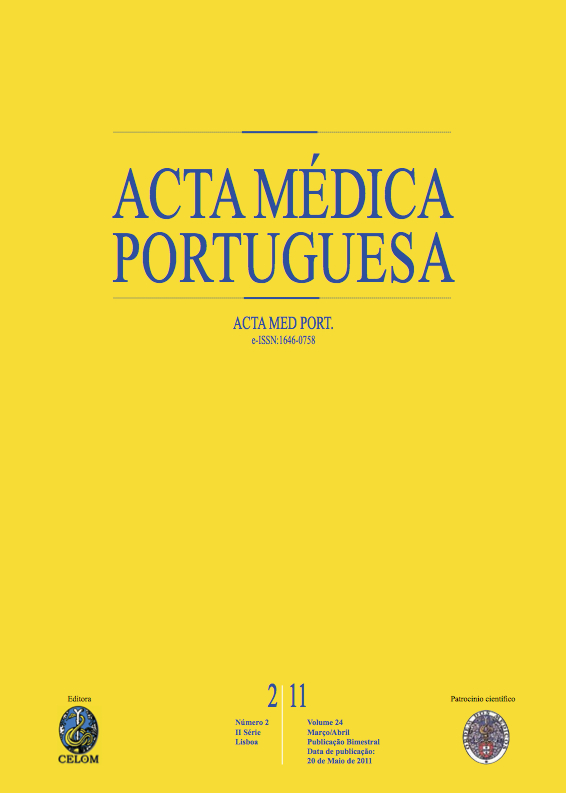Low caloric value and high salt content in the meals served in school canteens.
DOI:
https://doi.org/10.20344/amp.1629Abstract
School lunch can contribute to aggravate food quality, by excess or deficiency, or it can contribute to compensate and alleviate them. This school meal should be an answer to combating the epidemic of obesity, and to feed some grace children. The objective was to study the nutritional composition of catering in canteens of public schools, from Northern municipalities in the District of Porto: Vila do Conde, Póvoa de Varzim, Santo Tirso and Trofa. Meals were subjected to laboratory analysis. Thirty two meals, four per each school were analysed, reference values for the analysis of the nutritional composition of meals were dietary reference intakes (USA) and eating well at school (UK). The average energy meal content was 447 kcal and the median 440 kcal (22% of daily calories). The average values of nutrients, per meal, were: lipids 9, 8 g, carbohydrate 65,7 g and proteins 24,0 g. In average the contribution for the meal energy was: 20% fat, 59% carbohydrate and 21% protein. In more than 75% of meals the contribution of lipid content was below the lower bound of the reference range. The average content of sodium chloride per meal was 3.4 g, and the confidence interval 95% to average 3.0 to 3.8 g, well above the recommended maximum value of 1.5 grams. The average content fiber per meal was 10.8 g higher than the minimum considered appropriate. In conclusion, the value low caloric meals was mainly due to the low fat content, and content salt of any of the components of the meal was very high.Downloads
Downloads
How to Cite
Issue
Section
License
All the articles published in the AMP are open access and comply with the requirements of funding agencies or academic institutions. The AMP is governed by the terms of the Creative Commons ‘Attribution – Non-Commercial Use - (CC-BY-NC)’ license, regarding the use by third parties.
It is the author’s responsibility to obtain approval for the reproduction of figures, tables, etc. from other publications.
Upon acceptance of an article for publication, the authors will be asked to complete the ICMJE “Copyright Liability and Copyright Sharing Statement “(http://www.actamedicaportuguesa.com/info/AMP-NormasPublicacao.pdf) and the “Declaration of Potential Conflicts of Interest” (http:// www.icmje.org/conflicts-of-interest). An e-mail will be sent to the corresponding author to acknowledge receipt of the manuscript.
After publication, the authors are authorised to make their articles available in repositories of their institutions of origin, as long as they always mention where they were published and according to the Creative Commons license.









